Story of 5 major pipelines explains Europe’s love-hate relationship with Russian energy
Published time: 26 Sep, 2019 13:18Edited time: 26 Sep, 2019 13:24
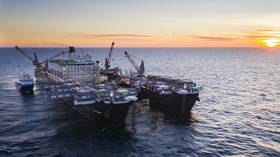
This year, Russia provided record supplies of gas to the European market to meet the region’s growing demand. But some nations, particularly the US, Poland and the Baltic states, still insist Europe can do without Russian energy.
Here are the key Russian pipelines supplying oil and gas to Europe, which Washington and allies are trying to obstruct.
The Nord Stream 2 gas pipeline
This project, which is almost complete, aims to deliver more natural gas from Russia to the EU. It involves the construction of two pipelines with a total capacity of 55 billion cubic meters of gas per year, spanning from the Russian coast to Germany and further on to other European customers through the Baltic Sea.
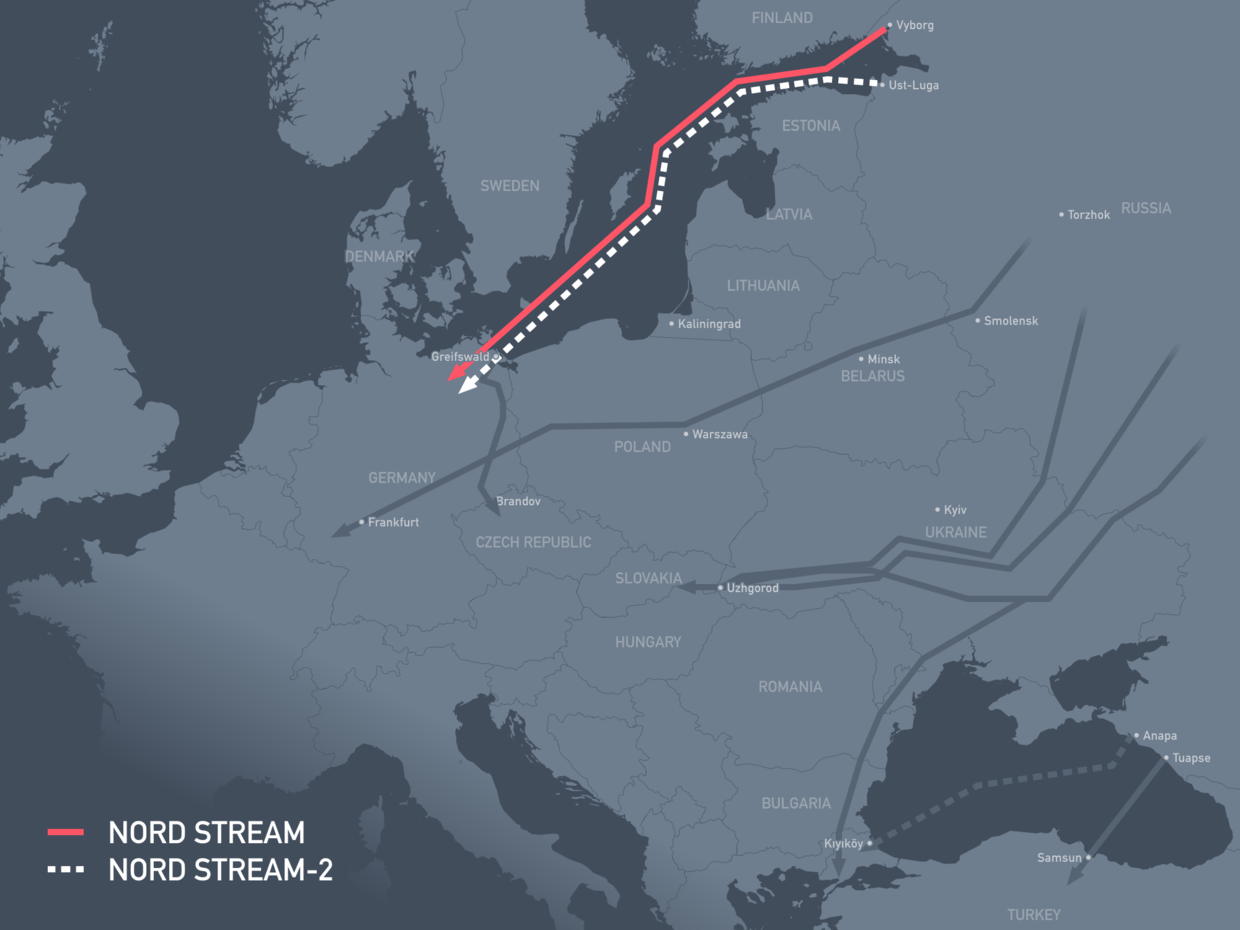
This week, Washington and Warsaw called the Russian gas pipeline a “threat” to European energy security. While the pipeline does not cross the territory of either country, they have discussed the possibility of hindering the implementation of the Nord Stream 2. US President Donald Trump has been promoting American LNG to edge Russia out of the EU gas market, while Poland has ambitions of becoming a major European LNG hub.
However, Germany – Europe’s biggest economy – remains firm as Nord Stream 2’s strongest backer, insisting that the pipeline will ensure the continent’s energy security.
Berlin rejects concerns that the project affords Russia too much leverage over Europe’s energy supply. It insists the pipeline will help Germany meet growing demand for energy as it phases out coal and nuclear power.
ALSO ON RT.COMWashington & Warsaw make pact to obstruct Russia’s Nord Stream 2 gas pipeline
German Chancellor Angela Merkel has repeatedly reminded her European neighbors that Germany and Europe bought gas from Russia even at the height of the Cold War.
According to analyst John Laughland, Poland and the Baltic states are heavily influenced by US policy on the Nord Stream 2 project, and their latest comments are all part of a “battle” for the European market. Countries like Poland and Lithuania are now campaigning on behalf of Washington for Europe to purchase “expensive American [Liquefied Natural Gas] instead of cheap Russian gas,” Laughland explained to RT.
Nord Stream gas pipeline
The first gas pipeline to establish direct Russian energy supplies, Nord Stream, was opened in 2011. It pumps gas under the Baltic Sea to Germany and the rest of Europe, bypassing transit countries.With a length of 1,224km, the pipeline’s annual capacity is 55 billion cubic meters of gas.
In 2000, the European Commission included Nord Stream as a priority project in the Trans-European Network for Energy (TEN-E) Guidelines. That means that Nord Stream is key to Europe’s sustainable development and energy security.
ALSO ON RT.COMFair enough: WTO ruling welcomed by both sides in case made by Russia over EU energy market access
However last week, the European Court of Justice (ECJ) ruled to limit Russian gas giant Gazprom’s access to the Opal pipeline in eastern Germany. Opal is a transit link pipeline connecting Nord Stream with European infrastructure.The ruling requires Gazprom to reduce its gas shipments via the Opal by limiting them to a maximum of 50 percent of capacity.
The lawsuit was initiated by Polish state gas company PGNiG after the European Commission removed an earlier cap on pipeline shipments in 2016.
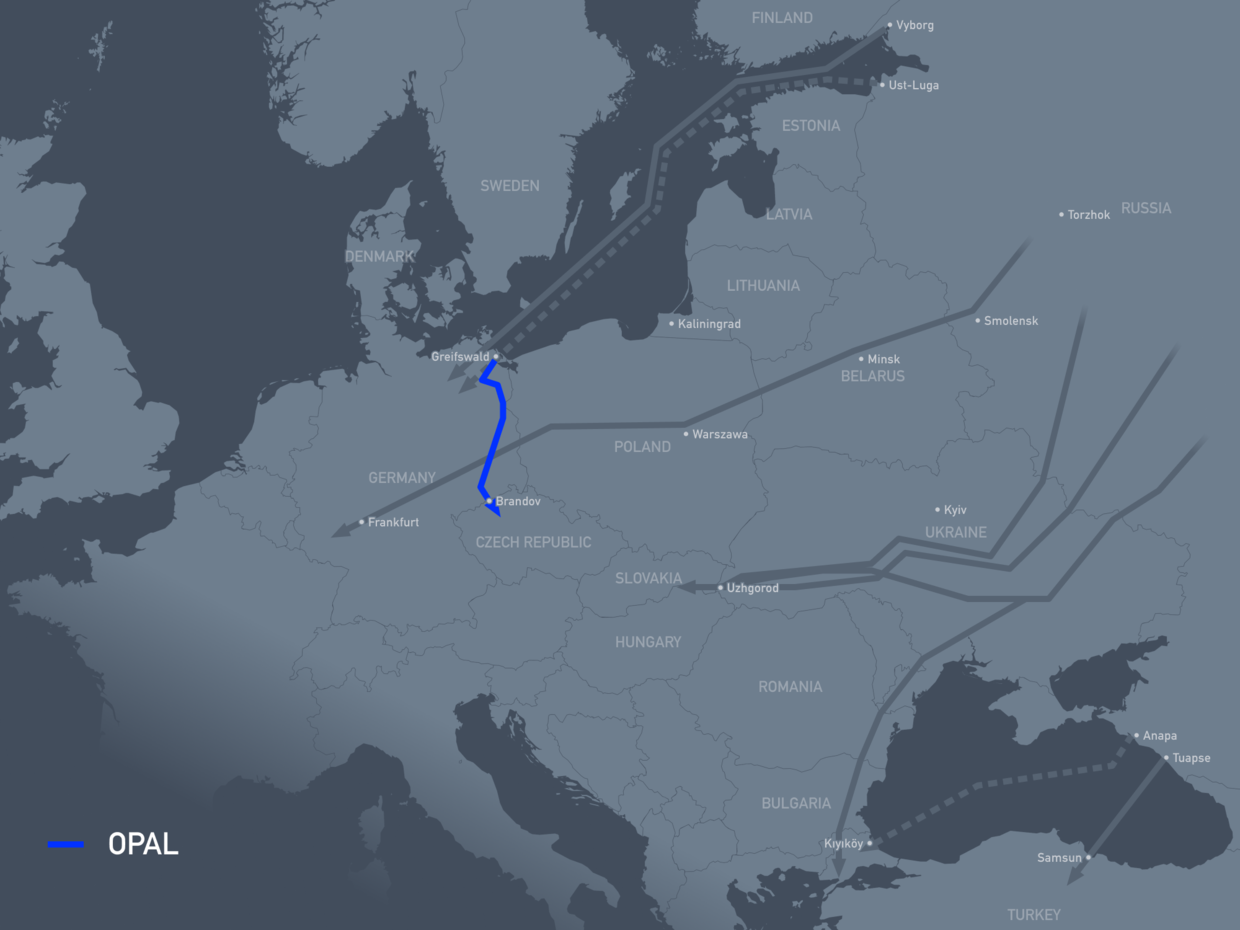
Opal, which is located in Germany and has the capacity to deliver 36 billion cubic meters annually, is a key element for the transportation of natural gas directly from Russia through the Nord Stream pipeline and its future expansion, the Nord Stream 2. The use of the pipeline, which is co-owned by Wintershall and Gazprom, has been the subject of several legal battles.
Druzhba oil pipeline
One of the longest and biggest oil pipeline networks in the world, Druzhba was put into operation in 1964. It carries oil some 4,000km from the eastern part of European Russia to Ukraine, Belarus, Poland, Hungary, Slovakia, the Czech Republic and Germany. The network also branches out into numerous pipelines to deliver its product throughout Eastern Europe and beyond. Druzhba crosses 45 major rivers on its road to Central Europe.
ALSO ON RT.COMUkraine resumes oil transit to European consumers via Druzhba pipeline
Back in the 90s, the pipeline supplied oil to the energy-hungry western regions of the Soviet Union. The delivery of oil was halted on April 20, 2019 due to contamination but was later resumed.
Yamal-Europe gas pipeline
The transnational Yamal-Europe route supplies Russian gas to Western Europe, running across Russia, Belarus, Poland and Germany.
The pipeline’s construction started in 1994 and in 2006 Yamal-Europe reached its design capacity of 32.9 billion cubic meters. The pipeline’s total length is over 2,000km. It has become an additional export corridor that has increased the flexibility and reliability of Russian gas supplies to Western Europe.
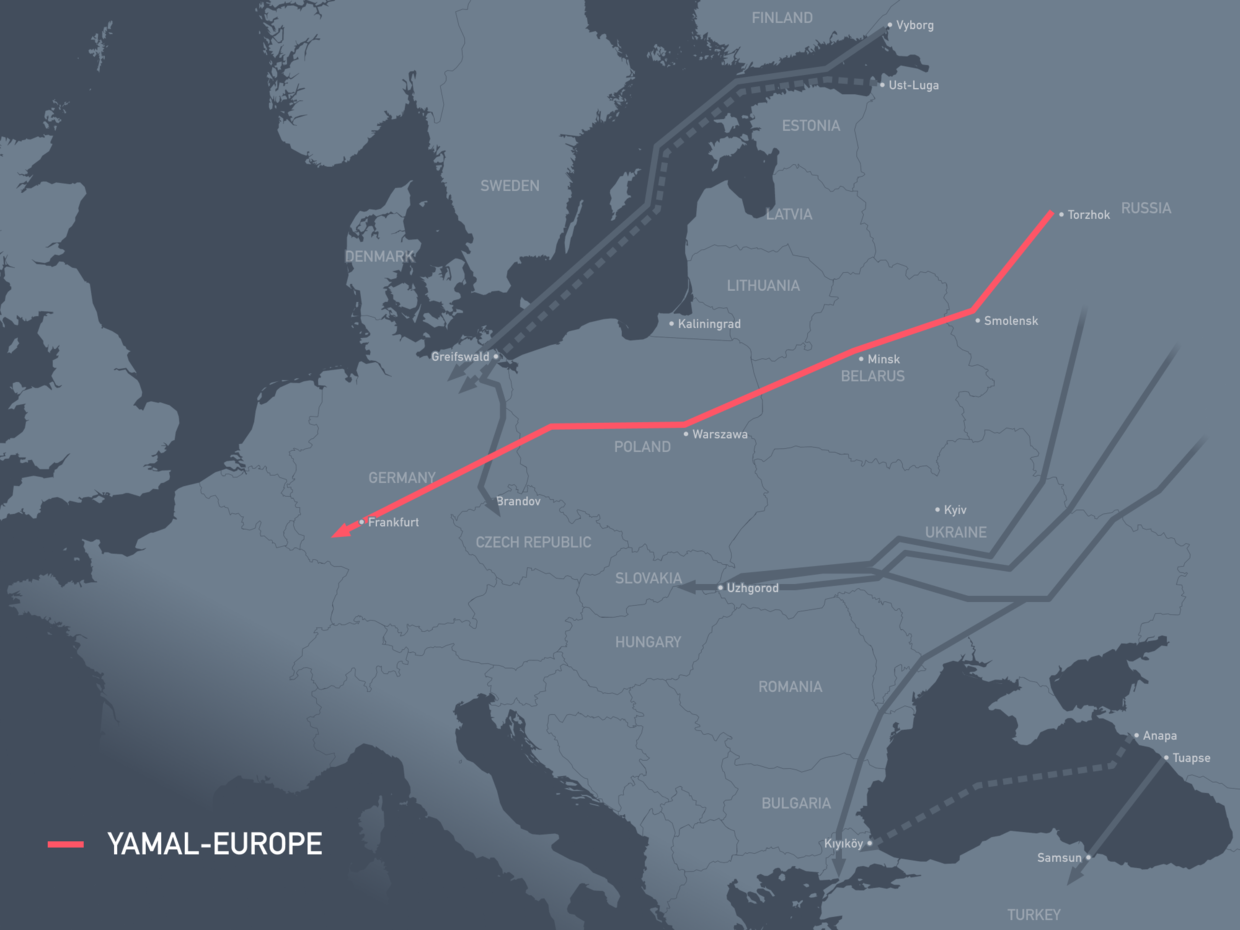
Since 2005, there have been plans to build a second leg of the pipeline, but later Moscow decided to launch the Nord Stream pipeline instead.
The Yamal-Europe and the Nord Stream (as well as its extension) gas pipelines have been built as alternative routes to guarantee stable supplies to the EU. The necessity of their construction became clear after the gas shortage crisis of 2006, which saw parts of Europe left without heat after Ukraine siphoned off transit gas from the pipeline crossing its territory.
ALSO ON RT.COMUkraine sees significant cuts in Russian gas transit
More than 50 percent of Russian gas supplies to the EU traditionally flowed via Ukraine. For the last several years, Russia and Ukraine have been tied up in transit-fee disputes as the major pipelines supplying Europe with Russian oil and gas run through Ukraine.
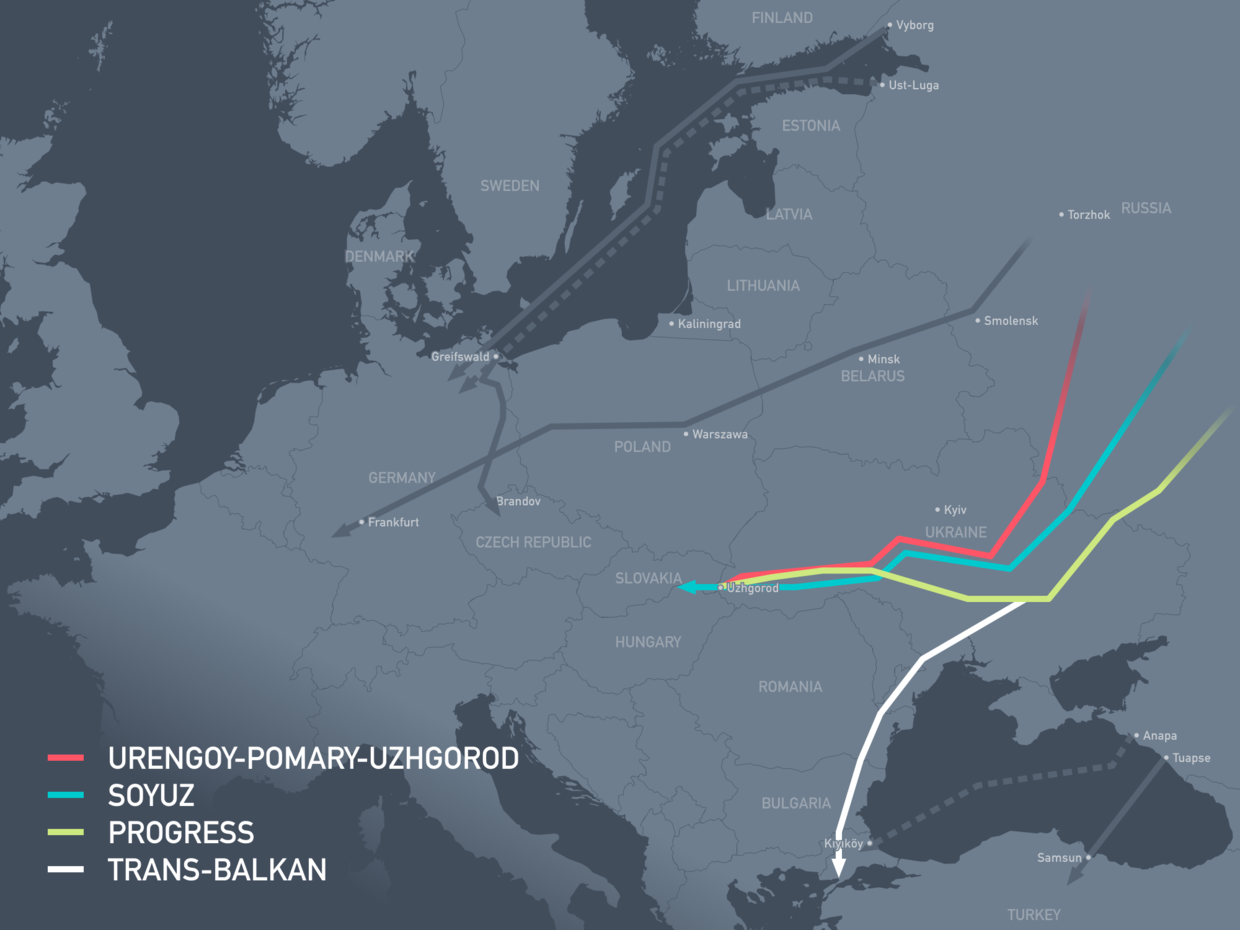
The largest gas exporter to the European market, Russia, has been providing natural gas supplies to Europe for more than 50 years. Prices for Russian blue fuel are much more competitive than US LNG, and far less risky than deliveries sourced from Africa.
Europeans, particularly Germany, have been raising concerns about energy security as gas production in the EU is set to fall by 50 percent over the next 20 years, even as demand is forecast to continue at its current pace.

0 Comments:
Post a Comment
Subscribe to Post Comments [Atom]
<< Home